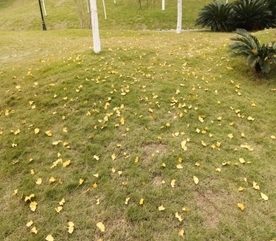Sloping Yard Landscaping Ideas
Many front gardens have a gradient, which makes mowing a lawn impractical. Here we’ll llook at some easy landscaping ideas for a sloped site.

Ground-Cover Plants
An easy, low-maintenance alternative is to carpet the slope with easy-care ground-cover plants.
Create a Rockery
Alternatively, you can create a rockery on the gradient. Embed rocks into the slope or, especially if the gradient is steep, terrace the slope by creating a series of low retaining walls with planting in between.
Making a Rockery
Rockery plants need an open, sunny site and good drainage, although the soil should not be particularly rich. If your soil is ‘heavy’, with a high clay or silt content, improve it by digging in grit or sharp sand . If the subsoil has poor drainage, dig out the top 30 cm (12 in) of soil, put in a 15 cm (6 in) base of rubble or hard core, and then a 5 cm(2 in) layer of sharp sand followed by 10 cm (4 in) of topsoil – hard work, but your efforts will be rewarded.
When choosing stones to embed in a rockery slope, first contact quarries in your area because they may be able to provide you with a local stone that blends with the surrounding landscape. Otherwise, common stones for rock gardens include limestone, which weathers quickly but is not liked by acid-loving plants, and sandstone, which comes in attractive colours.
Other materials include driftwood and slate, which comes in grey, green and purple, and tufa, which is lightweight and good for a small rockery. Choose plants that are easy to establish, but not invasive. Along the top edges of the wall, plant prostrate alpines so that they tumble over to soften the hard structure. To prevent alpines rotting at the base, plant shallowly with 2.5 cm (1 in) of the rootball above soil level and mulch with about 5 cm (2 in) of pea shingle or stone chippings. This will also conserve moisture during dry spells, control weeds and look attractive.
Try Terracing
A terraced garden may be expensive and time-consuming to have built, but it allows easy access for maintenance and can be linked by shallow steps. Terracing can also create the illusion of space by combining open areas, for example of gravel, with planting beds. When building a terrace, make sure that the retaining walls are secure: they should be able to support at least the weight of a person.
Clear all weeds by using glyphosate-based weedkiller, then allow any new soil added to the terraces to settle for a few weeks. Before planting, top up the beds with extra soil to form a gentle backwards slope to the bottom of the terrace above.



